Welcome to the fourth Chicagoboyz post (Feb 22, 2021) in the “Section 22 Week” count down to the 24 Feb 2021 Bilge Pumps podcast with the Section 22 Special Interest Group e-mail list. Today’s post will include slides 49 through 60 of 82 of the Section 22 Powerpoint information packet. These slides cover Section 22 combat operations from January to July 1945.
It is worth pointing out that while there are 82 slides worth of material I will publish over “Section 22 Week.” They represent, at best, a “picture book highlights reel” of what the between 500 to 1000 men involved in Section 22 radio counter measures operations did between May 1943 and August 1945.
It is simply very hard to draw a line on who was in or not in a Section 22 field unit as the US Navy field units outfitted dozens of ships and submarines in the Australian and American navies and many air crews on Section 22 missions were pilots and gunners teamed with a one or two RCM operators simply because their plane was on the roster for a mission that day.
Certainly the crew of the submarine USS Batfish did not think of themselves as part of Section 22, yet they carried Section 22’s institutional DNA and the radar intercept equipment that helped them hunt down three IJN submarines in February 1945.
This fuzzy ‘were they/weren’t they Section 22‘ grey area is where I pull into this post one Radio Electrician George L. Johnson (USN) of the AGC-3 USS Rocky Mount. The AGC-3, like all of it’s contemporaries was the forward logistical repair node for all things radar. This included the Mark III IFF as its transponder was a form of “secondary radar.”
The USS Rocky Mount had been Admiral Raymond Turner’s flag ship in the invasion of the Marianas in the summer of 1944. During the Leyte invasion, it flew the flag of Rear Adm. Forrest B. Royal as commander of Amphibious Group Six.
Cmdr Jolley’s Oct 1944 Section 22 Current Statement and his Appendix N to the Leyte invasions orders hit people like Radio Electrician George L. Johnson on the USS Rocky Mount in the gut. They maintained the Mark III IFF for the Pacific fleet and his ship along with every other AGC in the invasion force were tasked with making sure every Mark III in the Leyte invasion fleet worked and worked well. Some time in the six weeks leading up to the invasion and the few weeks after — in the midst of Kamikaze attacks — Radio Electrician Johnson found time to redesign the Mark III IFF and submit that redesign up the USS Rocky Mount’s chain of command in November 1944.
This redesign package was endorsed the the captain of the USS Rocky Mount, Admiral Royal and reached Admiral Raymond Turner’s staff in late November 1944. On December 7th, Turner endorsed the design and sent it to the Bureau of Ships in Washington D.C. See the archival document photographed below:
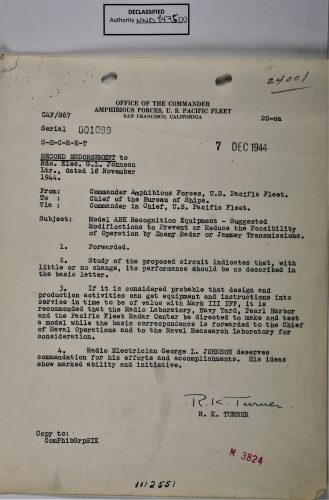
There are several things that can be drawn from this archival “smoking gun.”
The most senior flag rank officers of the Central Pacific theater knew with undeniable certainty the Japanese were exploiting the Mark III IFF system to track Allied planes and ships in 1944 during and after the invasion of Leyte. (How much earlier is a good question.)
In Admiral Turner’s case, he did one right thing. He sent Radio Electrician George L. Johnson package to the Bureau of Ships in December 1944.
But Admiral Turner didn’t do THE right thing, incorporate Cmdr Jolley’s Appendix N IFF “de-lousing procedure” into the communications annexes of the Iwo Jima and Okinawa invasion plans.
If you consider Radio Electrician George L. Johnson’s actions a legacy of Cmdr Jolley’s moral leadership as Assistant Director of Section 22.
Then you also have to consider Admiral Turner’s inactions regards including Cmdr Jolley’s Appendix N IFF “de-lousing procedure” a toxic leadership legacy of Chief of Naval Operations Admiral Ernest King. He left Admiral Turner so intimidated that Turner simply could not do what he should have done.
In human terms, we cannot know how many additional American casualties Admiral King’s toxic leadership legacy caused in the Pacific. We can only guess. I’ll give you mine.
- 100(+) preventable US Navy & USMC casualties? This feels certain.
- 1000(+) preventable US Navy & USMC casualties? This feels like a very, very soft “no.”
Now to today’s Section 22 slides:
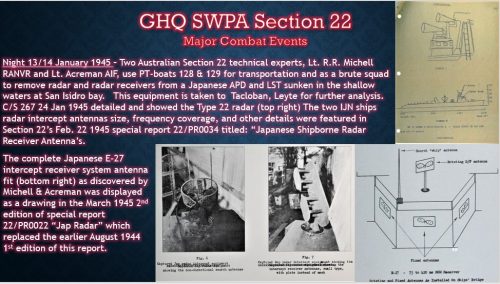
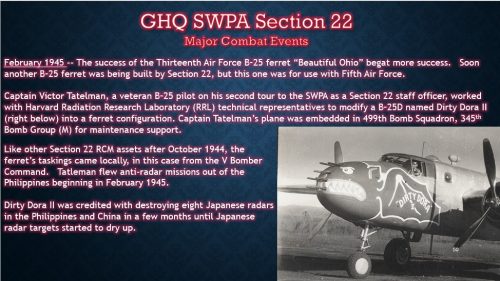
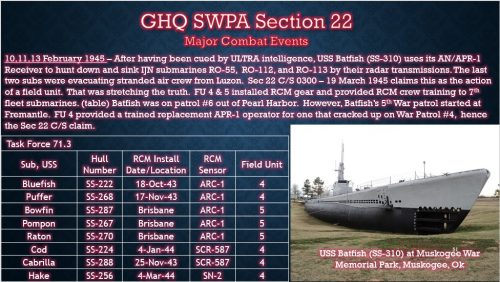
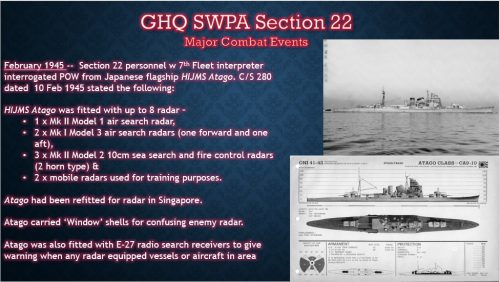
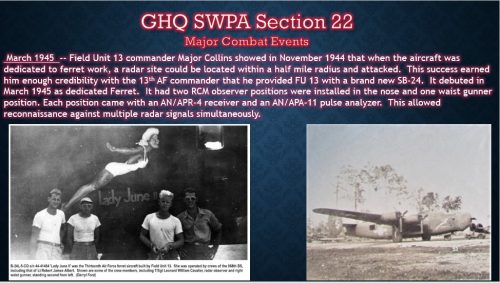

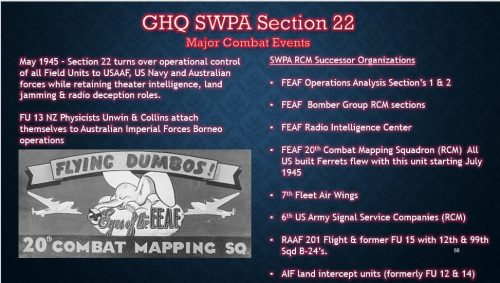
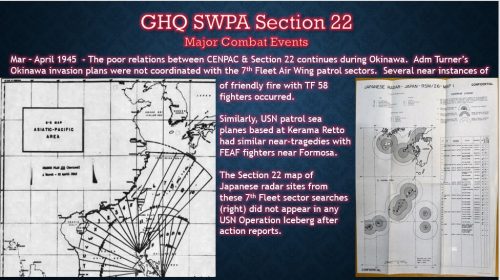
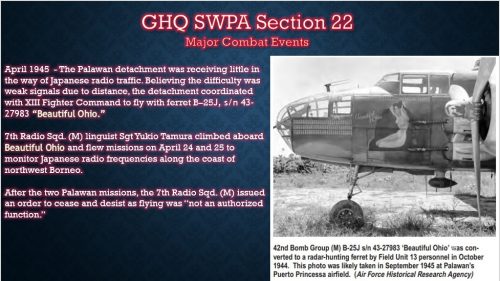

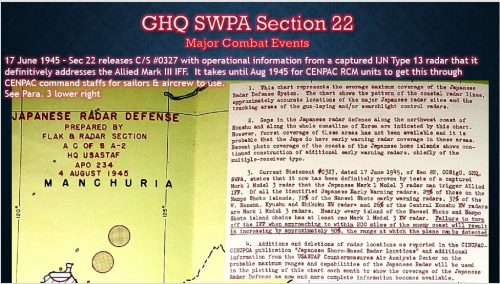
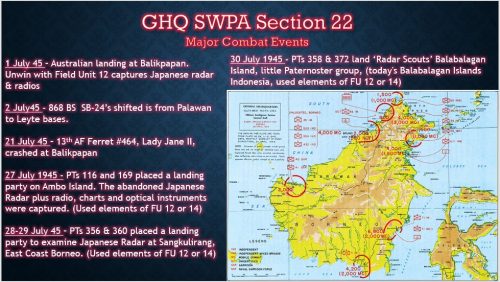
This is the 2/22/2021 Twitter day 4 of “Section 22 Week” cross post:
https://twitter.com/TrentTelenko/status/1363959161403236353
This is the 2/22/2021 Facebook Day 4 of “Section 22 Week” cross post:
https://www.facebook.com/groups/1414345762215538/?multi_permalinks=2823069911343109¬if_id=1614026507331307¬if_t=feedback_reaction_generic&ref=notif